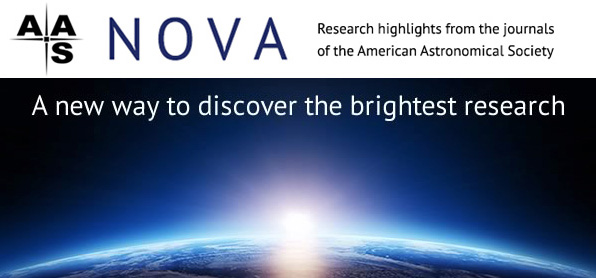Highlights from AAS Nova: 9-22 July 2017

Susanna Kohler American Astronomical Society (AAS)
AAS Nova provides brief highlights of recently published articles from the AAS journals, i.e., The Astronomical Journal (AJ) and The Astrophysical Journal (ApJ), ApJ Letters, and ApJ Supplements. The website's intent is to gain broader exposure for AAS authors and to provide astronomy researchers and enthusiasts with summaries of recent, interesting research across a wide range of astronomical fields.
The following are the AAS Nova highlights from the past two weeks; follow the links to read more, or visit the AAS Nova webpage for more posts.
21 July 2017
Globular Clusters for Faint Galaxies
New Hubble images of two ultra-diffuse galaxies have revealed an enormous number of globular clusters. Why do these dim galaxies host so many?
19 July 2017
Nearby Hot Stars May Change Our View of Distant Sources
Distant quasars can appear to twinkle when material lies between them and us. A new study blames nearby hot stars for some of the extreme variability of quasars.
18 July 2017
Strength in Numbers: A Smarter Way to Find Habitable Worlds
Astrobites discusses a new way to explore The Big Question: is there life beyond our solar system?
17 July 2017
Featured Image: Central Black Holes in Late-Type Galaxies
Hidden black holes have been discovered lurking in the centers of nearby low-mass galaxies.
14 July 2017
Speeding Clouds May Reveal Invisible Black Holes
Small, speeding clouds discovered at the center of our galaxy may have been formed by plunging black holes.
12 July 2017
WASP-12b and Its Possible Fiery Demise
Hot Jupiters are predicted to spiral ever closer to their hosts until they meet their eventual demise. Are we watching this happen with WASP-12b?
11 July 2017
Is There a Planet Nine?
Astrobites reports on the latest voice in the debate of whether there is a Planet Nine.
10 July 2017
Exploring Disks Around Planets
We’ve never spotted a circumplanetary disk before — but thanks to new simulations, we now have a better idea of what to look for.


